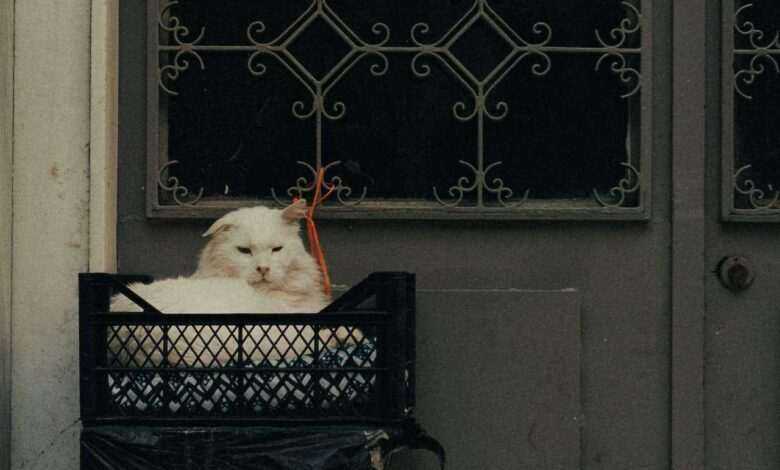Cat Crate Training: Creating a Secure Haven for Your Furry Friends

Cat crate training is a valuable skill for both pet owners and their furry friends. Whether you’re looking to make trips to the vet less stressful or provide a safe haven during emergencies, cat crate training offers numerous benefits. In this comprehensive guide, we’ll delve into the ins and outs of crate training for cats, from selecting the right crate to avoiding common mistakes, ensuring that your feline friend not only accepts but embraces their crate.
Understanding the Benefits of Cat Crate Training
Cat crate training is a versatile skill that can significantly enhance your pet’s well-being and your peace of mind. Here are the key advantages:
1. Stress Reduction: A Cozy Retreat
Cats are creatures of habit and often seek out cozy, enclosed spaces to feel safe and secure. A crate can provide precisely that during various situations:
- Vet Visits: Routine check-ups or medical visits can be stressful for cats. A well-trained cat can find solace in their familiar crate, reducing anxiety during these visits.
- Noisy Environments: Household activities like vacuuming, home renovations, or loud gatherings can be distressing for cats. A crate offers a quiet sanctuary where they can retreat.
2. Safe Transportation: Smooth Travel Experience
Cat crates are indispensable for safe and secure travel, offering benefits such as:
- Car Rides: Unrestrained cats in a moving vehicle can be a major distraction and a safety hazard. Crating your cat during car rides prevents them from interfering with your driving.
- Reduced Anxiety: Some cats are prone to motion sickness or excessive anxiety during travel. A crate provides a confined, secure space that can alleviate these issues.
3. Emergency Preparedness: A Lifesaver
In emergencies like natural disasters or unforeseen crises, having a cat that is comfortable in a crate can be a lifesaver. Your cat can be swiftly evacuated to safety without causing undue stress.
4. Potty Training: Clean Living
Crate training can be a pivotal component of effective potty training for cats, especially kittens. It helps establish a structured routine and minimizes accidents around the house.
5. Comfort Zone: A Place to Call Their Own
Cats love to establish their territories, and a crate can serve as a designated safe space where your feline friend can relax, sleep, or simply take some alone time.
Tips for Successful Cat Crate Training
Cat crate training, like any skill, requires patience and a step-by-step approach to ensure your cat embraces the crate willingly and comfortably. Here’s a detailed guide to achieving success:
1. Choose the Right Crate Size
Select a crate that allows your cat to stand, turn around, and lie down comfortably. A crate that’s too spacious might reduce the sense of security, so choose an appropriate size based on your cat’s dimensions.
2. Make the Crate Comfortable
Transform the crate into a cozy oasis for your cat:
- Soft Bedding: Line the crate with soft, comfortable bedding. Your cat will appreciate a warm and inviting space.
- Familiar Scents: Place items with familiar scents, like a favorite blanket or toy, inside the crate to create a sense of security.
3. Introduction Matters
Introduce the crate gradually and positively:
- Open Door Policy: Begin by leaving the crate door open, allowing your cat to explore it voluntarily. Reward them with treats and praise when they venture inside.
4. Prevent Crate Anxiety
Avoid locking your cat in the crate immediately or for extended periods, as this can lead to anxiety. Instead, practice short, positive experiences:
- Mealtime: Start by feeding your cat near the crate, then move the food bowl inside to associate the crate with positive mealtime experiences.
- Short Stays: Encourage your cat to enter the crate for short periods, gradually increasing the duration as they become more comfortable.
5. Use Crate for Travel
The crate should become synonymous with safe and comfortable travel. Start with short car rides around the block before embarking on longer journeys. Ensure the crate is securely fastened in the car to guarantee safety.
6. Crate as a Safe Space
Encourage your cat to view the crate as a personal sanctuary:
- Naptime: Encourage your cat to take naps in the crate. Ensure it’s inviting and peaceful.
- Alone Time: Use the crate for times when your cat needs a quiet retreat, whether it’s from household commotion or for solitude.
7. Consistency Is Key
Consistency is the linchpin of successful crate training. Maintain a consistent schedule and always associate the crate with positive experiences, whether it’s mealtime, relaxation, or travel.
Common Cat Crate Training Mistakes to Avoid
As with any training endeavor, it’s essential to steer clear of common mistakes that can hinder your cat’s progress:
1. Rushing the Process
One of the most prevalent errors is rushing crate training. Gradual introductions and positive associations are fundamental to your cat’s success.
2. Skipping Rewards
Always reward your cat for entering the crate or remaining calm inside. Positive reinforcement reinforces the idea that the crate is a welcoming place.
3. Punishment
Never use the crate as a form of punishment. It should always be associated with safety and positive experiences.
4. Forcing Entry
Avoid physically forcing your cat into the crate, as this can create fear and resistance. Gentle persuasion and patience are key.
5. Long Isolation
Do not leave your cat crated for extended periods, especially in the beginning. The goal is to create a secure space, not to isolate your cat.
Cat Crate Training
By following these tips and steering clear of common mistakes, you can successfully crate train your cat, providing them with a secure space and reducing stress in various situations. Crate training, when done right, offers numerous benefits and can be a transformative skill for both you and your feline companion.








